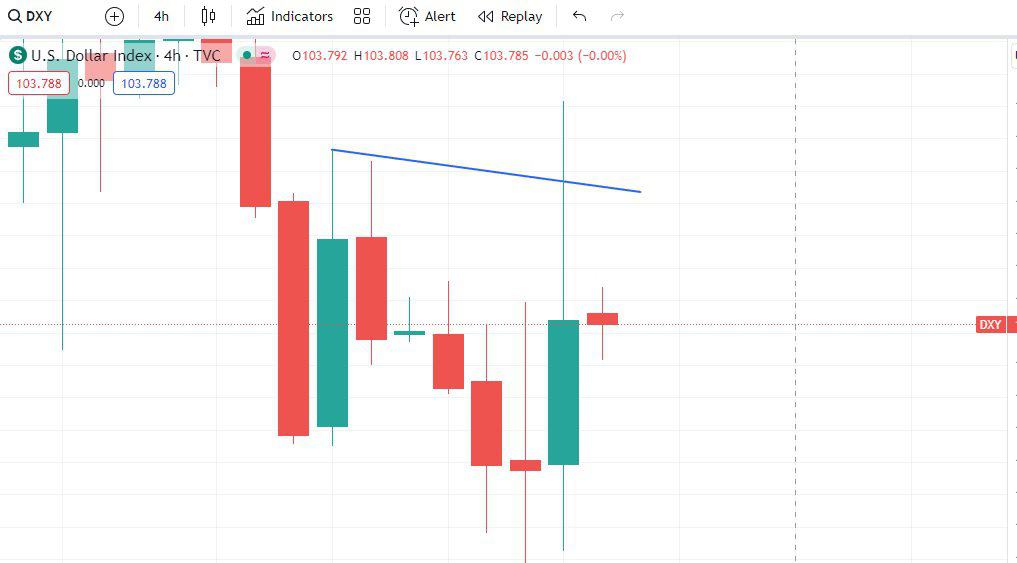Table of Contents
Trading the U.S. dollar involves speculating on its value against other currencies through various financial instruments. In the forex market, traders can short the USD by selling currency pairs as the base currency or buying pairs where it is the quote currency.
In the forex market, you cannot trade the U.S. Dollar Index (DXY) or the U.S. dollar alone because these are composite measures rather than individual assets. The DXY represents the U.S. dollar’s value relative to a basket of other currencies, such as the Euro, Yen, and Pound, but it’s not directly tradable in the forex market. Instead, traders engage in forex trading by buying or selling currency pairs that include the U.S. dollar, like EUR/USD or USD/JPY, which reflects its value relative to other currencies. Thus, while you can speculate on the strength or weakness of the U.S. dollar through these currency pairs, you can’t isolate or trade the dollar’s value independently from its comparative value against other currencies.

To short the USD, you can use Contracts for Difference (CFDs) by selling USD-based currency pairs or buying pairs where USD is the quote currency. Other methods include selling USD futures contracts, buying USD options, investing in ETFs or ETNs that benefit from a decline in the USD, and holding funds in currencies expected to appreciate against the USD.
1. Contracts for Difference (CFDs)
CFDs allow you to speculate on the price movements of the U.S. dollar without owning the underlying asset. To short the USD using CFDs:
In the forex market, you can directly short the U.S. dollar by:
- Selling USD Pairs where USD is base currency: Trade currency pairs where the USD is the base currency (e.g., USD/JPY or USD/EUR). By selling these pairs, you’re shorting the USD.
- BUYING EURUSD, GBPUSD, AUDUSD, and other forex pairs where USD is a secondary currency.
2. Currency Futures
Futures contracts are standardized agreements to buy or sell a currency at a future date:
- Select a Futures Contract: Choose a contract that involves the U.S. dollar, such as the USD futures.
- Short the Contract: Sell the futures contract to speculate on a USD value decline or. r. Close the Contract: Close your position before the contract’s expiration or settle it based on the contract terms.
To short the U.S. dollar using currency futures, follow these steps:
- Select a Futures Contract: Choose a futures contract like the U.S. Dollar Index (DXY) futures or a specific USD futures contract (e.g., USD/EUR futures). This contract will have a standardized expiration date and a specified amount of currency.
- Short the Contract: Sell the chosen USD futures contract. For example, if you sell a USD/EUR futures contract, you are betting that the USD will weaken relative to the Euro.
- Close the Contract: Monitor the position, and if the USD declines as you anticipated, you can close the position before the contract expires by buying back the futures contract at a lower price. Alternatively, you can settle the contract according to the terms, realizing a profit if the value of the USD has indeed fallen.
3. Options Trading
Options give you the right, but not the obligation, to buy or sell a currency at a specific price:
- Buy Put Options on USD: Purchase put options on USD or related currency pairs, which increase in value as the USD falls.
- Sell Call Options on USD: Selling call options can also benefit from a USD value decline.
4. Exchange-traded funds (ETFs)
Some ETFs are designed to move inversely with the U.S. dollar:
- Short USD ETFs: Invest in ETFs specifically designed to profit from a decline in the USD.
- Inversely Correlated ETFs: Look for funds negatively correlated with the USD.
5. Currency ETNs (Exchange-Traded Notes)
ETNs are debt instruments that track the performance of a currency or currency index:
- Short USD ETNs: Purchase ETNs designed to decline when the USD rises.
6. Foreign Currency Deposits
If you can open foreign currency accounts:
- Deposit in Other Currencies: Hold funds in currencies expected to appreciate against the USD.
Key Considerations:
- Risk Management: Shorting any currency involves significant risk, including the potential for large losses if the USD appreciates.
- Leverage: Many of these methods, especially CFDs and forex trading, involve leverage, which can amplify gains and losses.
- Market Analysis: Use fundamental and technical analysis to make informed decisions.
Always understand the risks involved and consider consulting a financial advisor to help you navigate these options.
























